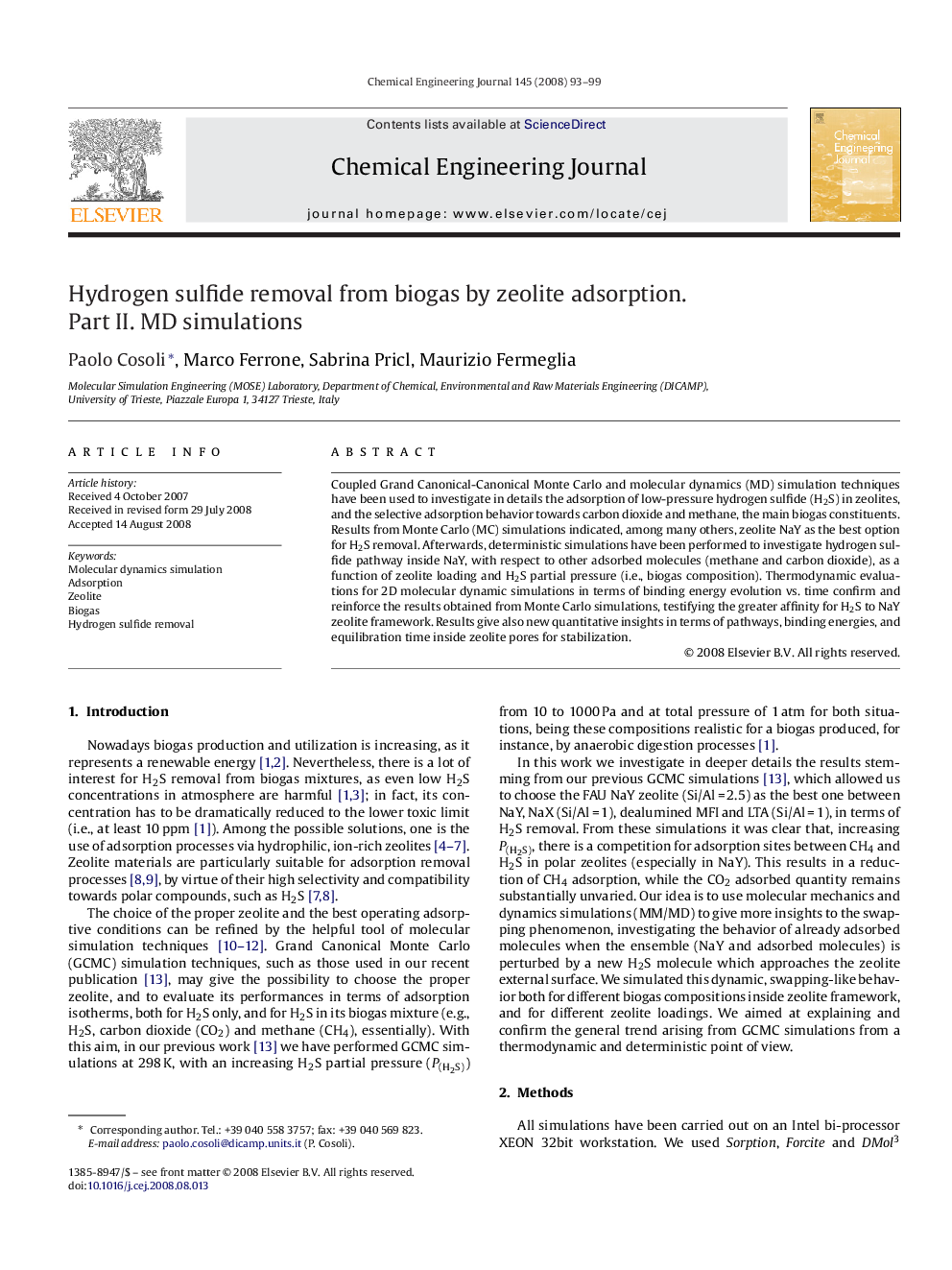| Article ID | Journal | Published Year | Pages | File Type |
|---|---|---|---|---|
| 152759 | Chemical Engineering Journal | 2008 | 7 Pages |
Coupled Grand Canonical-Canonical Monte Carlo and molecular dynamics (MD) simulation techniques have been used to investigate in details the adsorption of low-pressure hydrogen sulfide (H2S) in zeolites, and the selective adsorption behavior towards carbon dioxide and methane, the main biogas constituents. Results from Monte Carlo (MC) simulations indicated, among many others, zeolite NaY as the best option for H2S removal. Afterwards, deterministic simulations have been performed to investigate hydrogen sulfide pathway inside NaY, with respect to other adsorbed molecules (methane and carbon dioxide), as a function of zeolite loading and H2S partial pressure (i.e., biogas composition). Thermodynamic evaluations for 2D molecular dynamic simulations in terms of binding energy evolution vs. time confirm and reinforce the results obtained from Monte Carlo simulations, testifying the greater affinity for H2S to NaY zeolite framework. Results give also new quantitative insights in terms of pathways, binding energies, and equilibration time inside zeolite pores for stabilization.
